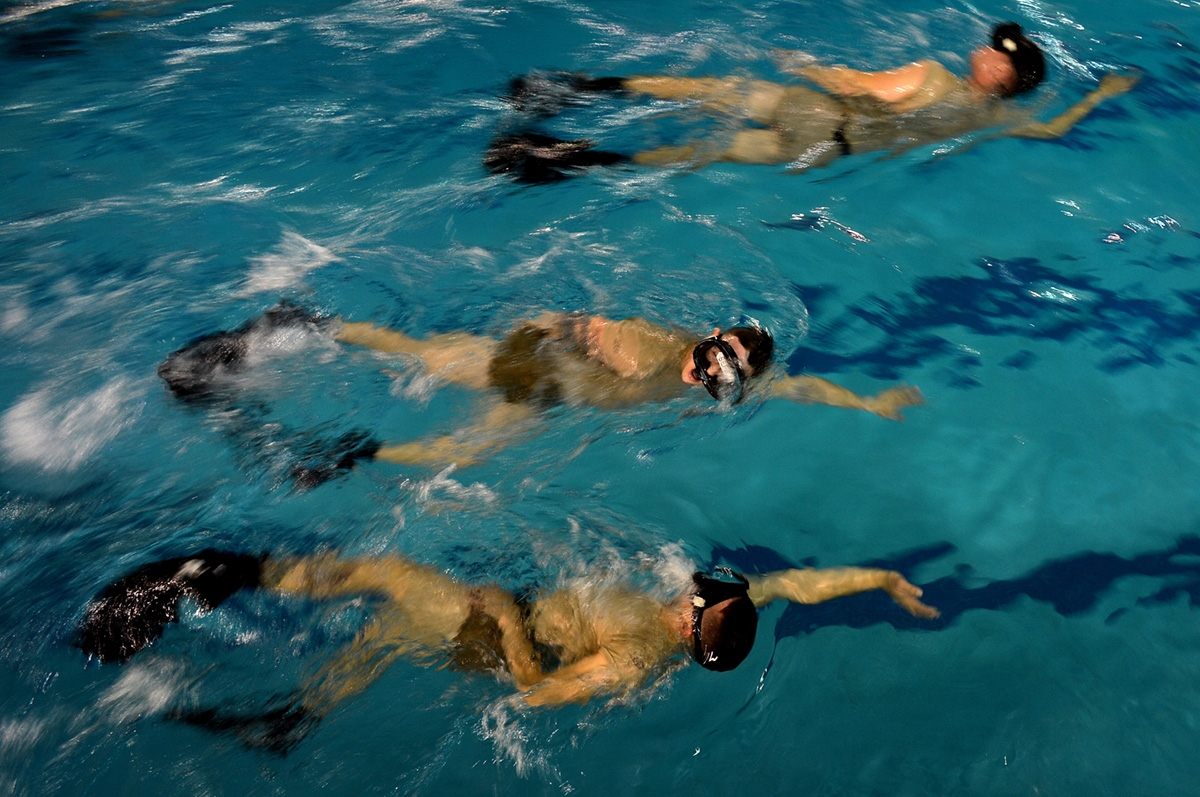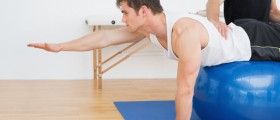
Aquatic Therapy Techniques
Adapted aquatic are techniques that concentrate on the swimming skills. However, swimming skills are corrected in order to be adapted for the individual abilities of the patient. The main focus points of adapted aquatics are skills that include entering and exiting the pool and developing certain swimming skills. Those who would benefit a lot from aquatic therapy are patients suffering from sensory disorders, limited range of motion, weakness, poor motor coordination, pain, spasticity, the deficit of balance, cardiac diseases, respiratory problems, circulatory problems, joint replacement, motor learning, obesity, depression and certain orthopedic injuries or traumas.Various programs for water therapy exercise exist. A person should talk to the doctor about those best suited for him or her. One such program consists of two exercises, the hundred and single leg circles. The patient should start at pool edge with spinal alignment and postural awareness with water Pilates. When performing the hundred, the patient should begin by sitting in an imaginary chair, with the thighs parallel to the bottom of the pool. The back should be placed against the pool wall and remain unmoving for as long as the exercise is not finished. Arms are placed at the sides with the palms facing backward. Once in that position a person should start by pumping the arms forward and back about six inches. Inhaling and exhaling should be done every five counts. As a person progresses, he or she should increase the pumping action with the arms coordinated with the breath until he or she counts to 100.
Single leg circles exercises begins with the person being in the same position as in the hundred. When in that position, the leg should be raised for 12 inches and straightened. Once in that position the leg should be turned out from the hip socket. The leg should be then circled across the body, then down, around and then back to the position a person started from. Five circles need to be done and then the leg should be moved in reversed direction. After finishing with the right leg, the same exercises should be performed with the left one. As a person progresses, the size of circles can be increased.Who can Benefits from aquatic therapy?
Patients suffering from low back and neck pain need to consider water therapy exercise program the most because they provide relief for these types of pain. The goal of these exercises is to ease the pain in these muscles and make them stronger in order for the future recurrences of this pain to be avoided. Patients who experience too much pain and are unable to perform the exercise on ground benefit the most from water exercises because in water the joints are not under so much stress. Due to this fact, those who suffer from osteoarthritis, advanced osteoarthritis and muscle tears or strain are in needs of these therapies the most. Apart from these patients, water exercises are often advised for people suffering from diabetes and those with problems of high blood pressure. According to the experts, both of these conditions are controlled easily when the patient starts water exercise therapy.Various reasons exist why performing certain exercises in water is better than on ground. The first reason is buoyancy because water counteracts gravity and that way supports the weight of the patient. In addition to this, strength and balance are improved as well.
Viscosity is another reason why water is good for performing exercises. By gentle friction, water comes up with resistance and that allows strengthening and conditioning of the injury to occur. At the same time the danger of any further injury is lessened because loss of balance is not a problem in water.Hydrostatic pressure is another benefit of water therapy. The strong effects provided but hydrostatic pressure enhance the functioning of the heart and lung. The pressure is also good for the muscle blood flow as it makes it better.
Certain exercises can only be performed under water because there is a great danger of hurting the spine as too much weight is placed on it. Under water, patients suffering from osteoarthritis in neck and shoulders are able to perform arm circles and shoulder rolls without feeling so much pain and improving the range motion and strength. The warmth of the water is also a beneficial factor.
















Your thoughts on this
Loading...